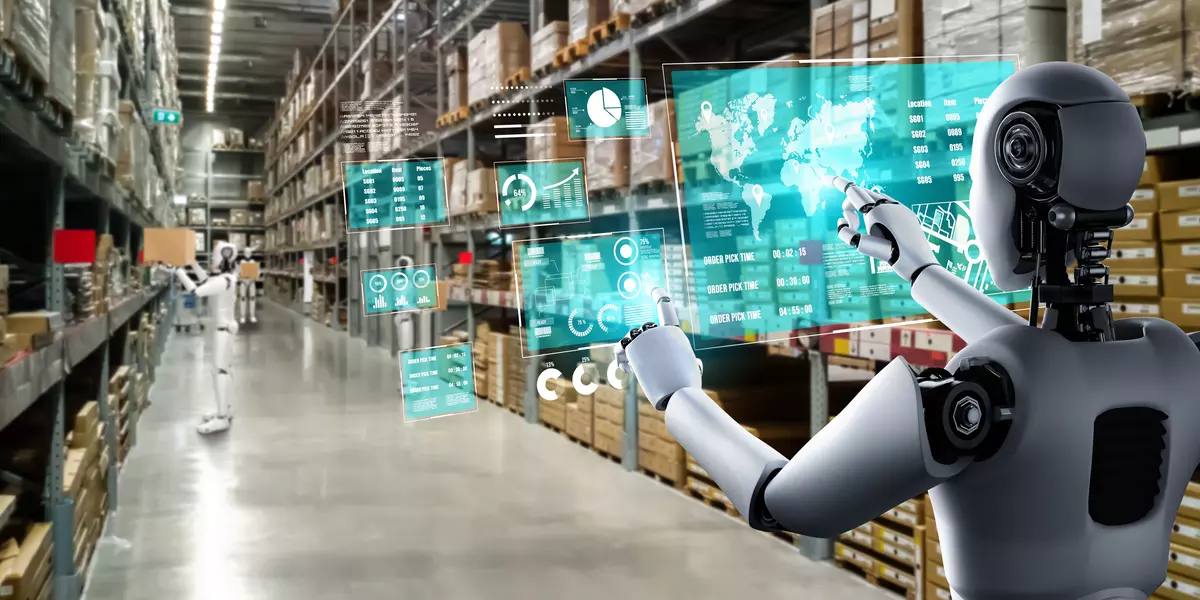Automated systems have become essential to protect your competitiveness and profit margins, and to adapt to the constant pressure to maintain your service level. For warehouses, the benefits of automation, when properly implemented, are undeniable: operational efficiency, cost optimization, labor management and customer satisfaction.
Why automate your warehouse?
The global warehouse automation market is expected to be worth $30 billion by 2026, which is nearly the double of what it is today. This means that in addition to the benefits of automation, there is also the necessity to keep up with your competitors who are automating to adapt to ever-changing and increasingly competitive markets.
However, the decision to invest is a difficult one. Warehouse automation investments are significant, require the implementation of complex projects and require technical and technological capabilities. It is therefore necessary to find a satisfactory balance between profit expectations and capital risk.
Warehouse automation has certainly become a hot topic, but how do you find the right automation mix for your needs in a market where there’s no such thing as a standard configuration?
To find out more, read three great reasons to enhance your warehouse with robots
Top 10 technologies to automate your warehouses
There are hundreds of different automation solutions for warehousing, but in order to provide you with a summarized overview, here are the top 10 technologies as defined by McKinsey:
- Automated multi-shuttle storage and retrieval systems to manage goods without human intervention. These solutions streamline picking tasks with a network of conveyors, a bin system, and sometimes robotic arms.
- Data analysis software. Automated warehouses generate a large volume of data on the goods that pass through them. Analyzing this data helps identify trends and optimize warehouse and supply chain management.
See also our article: How to Improve Your Logistics Forecasting
- Optical recognition to automatically scan and identify items. This allows for the location, sorting and routing of packages to storage areas or to the shipping docks.
- Connected conveyors that automatically optimize the flow of items according to various predefined parameters. They streamline operations and relieve operators of repetitive, time-consuming and non-value-added tasks.
- Warehouse Management Systems (WMS) that merge operations analysis data, performance reports and supply chain forecasts to effectively manage the entire warehouse.
See also our article: Logistics automation: the end of the traditional warehouse?
- Smart storage is an automated system that uses artificial intelligence to place and retrieve items in the most efficient way.
- 3D printing, which allows items to be printed on demand rather than stored.
- AGVs (Automatic Guided Vehicles) or AMRs (Automatic Mobile Robots) which can autonomously retrieve items from storage racks and transfer them to an order picking station. This is a more agile solution than fixed conveyors.
- Smart glasses for glass-pickingoffer a totally hands-free solution to operators by displaying all information directly on the glasses to assist them in order picking.
- Order picking robots, which are automated arms that reproduce the gestures of human order pickers, but with much more speed and accuracy.
The automation level of your warehouse will depend on your trade, your needs, and your investment capacity. Indeed, depending on the type of goods you sell, you can go for a dark warehouse (100% automatic, so it doesn't need lights, which allows energy savings) or efficiency tools to make operators’ tasks easier. There are an infinite number of combinations that will allow you to optimize your current and future organization with the right balance of profitability and investment.
Once you have defined your needs, the key to choosing the right automation levelis to make a business case for the different combinations. For this, there are some key factors to focus on.
Also read :Logistics automation: the end of the traditional warehouse?
The 4 key factors to estimate the profitability of your warehouse automation
Before investing in automation, you will need to make a business case. There are several strategic factors that need to be considered:
- Reducing the overall cost of labor and the cost of any labor shortage.
- The potential for market fluctuation and your own growth potential to evaluate the scalability of the different solutions and their cost.
- Estimated market share gain from service level improvement through automation technologies.
- Potential automation infrastructure changes to be considered over time, including relocation or redeployment.
-
These factors often compete against each other, as well as with overall strategic imperatives and spending priorities within the company. Many businesses opt to consult with an innovative third-party logistics provider to minimize risk and upfront costs while benefitting from the many advantages of automation.
GEODIS offers comprehensive logistics services. With us, you get a proven, reliable and forward-looking logistics partner who will adapt to your needs and use its expertise to invest in the automation that makes things happen.





















































 by
by 
